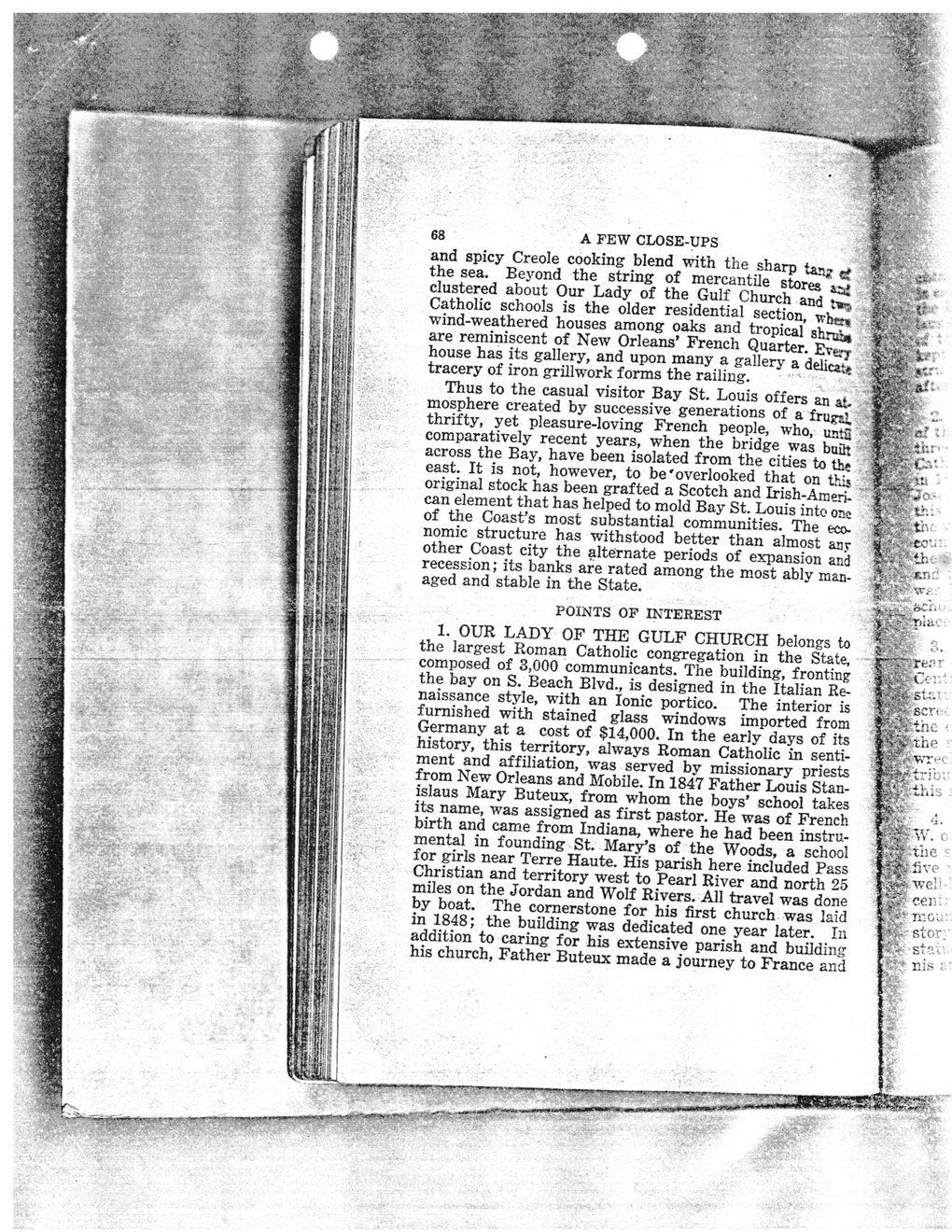This text was obtained via automated optical character recognition.
It has not been edited and may therefore contain several errors.
68 A FEW CLOSE-UPS and spicy Creole cooking blend with the sharp t&n* g the sea. Beyond the string of mercantile stores w clustered about Our Lady of the Gulf Church and twj Catholic schools is the older residential section, \rher* wind-weathered houses among oaks and tropical shrub* are reminiscent of New Orleans’ French Quarter. Every house has its gallery, and upon many a gallery a delicat* tracery of iron grillwork forms the railing. Thus to the casual visitor Bay St. Louis offers an atmosphere created by successive generations of a fruj^sl. thrifty, yet pleasure-loving French people, who, untS comparatively recent years, when the bridge was built across the Bay, have been isolated from the cities to the east. It is not, however, to be'overlooked that on this original stock has been grafted a Scotch and Irish-Ameri-can element that has helped to mold Bay St. Louis into one of the Coast’s most substantial communities. The eco-nomic structure has withstood better than almost any other Coast city the alternate periods of expansion and recession; its banks are rated among the most ably managed and stable in the State. POINTS OF INTEREST 1. OUR LADY OF THE GULF CHURCH belongs to the largest Roman Catholic congregation in the State, composed of 3,000 communicants. The building, fronting the bay on S. Beach Blvd., is designed in the Italian Renaissance style, with an Ionic portico. The interior is furnished with stained glass windows imported from Germany at a cost of $14,000. In the early days of its history, this territory, always Roman Catholic in sentiment and affiliation, was served by missionary priests from New Orleans and Mobile. In 1847 Father Louis Stanislaus Mary Buteux, from whom the boys’ school takes its name, was assigned as first pastor. He was of French birth and came from Indiana, where he had been instrumental in founding St. Mary’s of the Woods, a school for girls near Terre Haute. His parish here included Pass Christian and territory west to Pearl River and north 25 miles on the Jordan and Wolf Rivers. All travel was done by boat. The cornerstone for his first church was laid in 1848; the building was dedicated one year later. In addition to caring for his extensive parish and building his church, Father Buteux made a journey to France and

BSL 1930 To 1949 MS Gulf Coast WPA American Guide Series (5)